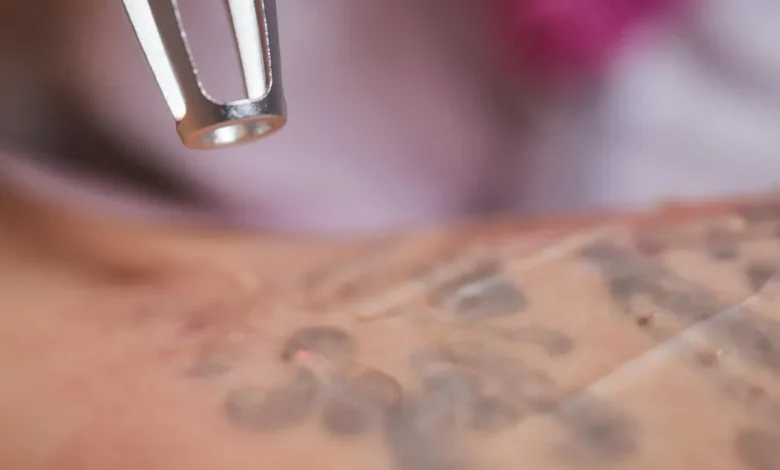The Science Behind Tattoo Ink: How It Impacts Removal Technique

Tattoos are more than just body art; they’re a bold declaration of identity, memory, or expression. But what happens when a once-loved design loses its charm or meaning? Tattoo removal enters the scene as a solution to erasing the past, yet the process is far from simple. At the heart of this intricate procedure lies a fascinating interplay between art and science: the chemistry of tattoo ink.
Tattoo ink isn’t just a random splash of color; it’s a carefully crafted formula of pigments and carriers designed to stay put—permanently. But this permanence is also what makes removal challenging. The ink’s unique composition and its interaction with the skin can determine the success—or struggle—of removal. By unpacking the science of tattoo ink, we can better understand how removal techniques work and why some tattoos seem almost impossible to erase.
1. Anatomy of Tattoo Ink
What makes tattoo ink so stubborn? To answer this, we need to dissect its anatomy. At its core, tattoo ink consists of two main components: pigments, which provide color, and carriers, which deliver the pigment into the skin.
Pigments can be either organic or inorganic. Organic pigments, derived from carbon-based compounds, often produce vibrant colors, while inorganic pigments, made from metals or minerals, give inks their rich, opaque hues. Think of titanium dioxide in white ink or iron oxide in red tones.
Carriers, such as water, alcohol, or glycerin, ensure pigments spread evenly and penetrate the dermis. These carriers also prevent contamination, keeping the ink sterile. But here’s the catch: once the ink settles, it becomes part of your skin’s architecture, making removal a painstaking process.
To complicate matters, not all tattoo inks are created equal. Some formulations include heavy metals like lead or cadmium, while others use modern, biodegradable pigments. This variability impacts how ink behaves under removal techniques, especially laser treatments.
2. How Tattoo Ink Interacts with Skin
The skin, your body’s largest organ, plays an active role in how tattoos and their inks perform. Tattooing involves inserting ink particles into the dermis layer using a needle, bypassing the outer epidermis. This placement ensures permanence but also triggers the body’s immune response.
When ink enters the dermis, the immune system perceives it as a foreign invader. Specialized cells called macrophages swoop in to “digest” the ink. While some particles are broken down, most are too large, leaving them trapped within the dermis. Over time, macrophages encapsulate these particles, holding them in place—hence the tattoo’s longevity.
Interestingly, this immune response explains why tattoos can fade naturally. As macrophages die, they release ink particles, which are then consumed by new macrophages or carried away through the lymphatic system. However, fading is uneven, and certain pigments, like black or blue, remain steadfast while others, like yellow or green, fade more quickly.
3. Advances in Ink Technology
The tattoo industry has seen significant innovation, particularly in ink formulations. Modern inks now cater not only to artistic needs but also to removal considerations. One such advancement is biodegradable inks, designed to break down more easily when exposed to removal techniques like lasers.
Another trend is vegan-friendly inks, which avoid animal-derived ingredients. While these inks appeal to ethical consumers, they may behave differently during removal due to their unique compositions. Similarly, fluorescent and metallic inks, popular for their eye-catching effects, often contain components that resist laser treatment, making removal a herculean task.
Regulatory differences also influence tattoo ink composition. In the U.S., tattoo inks are not FDA-approved, leading to a wide variety of unregulated formulations. In contrast, European regulations enforce stricter guidelines, promoting safer, standardized ink options.
4. The Relationship Between Ink Composition and Removal Techniques
Not all tattoo inks are created equal, and this disparity becomes glaringly evident during removal. The most common method, laser tattoo removal, relies on breaking ink particles into smaller fragments that the immune system can flush out. However, this process is influenced heavily by the ink’s color and composition.
Dark pigments, such as black and blue, absorb laser energy effectively, making them easier to break down. On the flip side, lighter hues like yellow and white reflect laser light, requiring more sessions and advanced technology to target them. Fortunately, clinics specializing in services like Houston tattoo removal often use cutting-edge lasers tailored to handle these challenges, ensuring better results.
Specialty inks, such as metallic or glow-in-the-dark formulations, present additional hurdles. These inks often contain reflective or refractive particles that scatter laser energy, reducing its effectiveness. In cities with advanced removal facilities, such as Houston tattoo removal centers, technicians are trained to navigate these complexities, leveraging technology to minimize risks and maximize outcomes.
Layered tattoos add another layer of complexity. Cover-ups often involve applying new ink over old designs, creating a multi-layered ink deposit. This demands precision, which is a hallmark of clinics like Houston tattoo removal providers, where state-of-the-art tools are used to target each layer without damaging the surrounding skin.
By understanding how ink composition impacts removal, professionals in cities like Houston can refine their techniques to offer personalized and efficient solutions. Whether it’s stubborn greens, yellows, or layered designs, the expertise available at Houston tattoo removal clinics ensures that clients achieve the best possible results with minimal discomfort.
5. Challenges of Removing Specific Inks
Certain inks refuse to go down without a fight. Metallic pigments, used in shimmering or iridescent designs, are notoriously resistant to removal. Similarly, fluorescent inks, which glow under UV light, often include chemical compounds that scatter laser energy, requiring specialized equipment.
Another challenge is the byproducts of ink degradation. For instance, green and blue pigments containing copper compounds can release toxic substances during laser treatment, making the process riskier. These complications underscore the importance of understanding an ink’s composition before beginning removal.
Even the size of ink particles matters. Smaller particles are easier for lasers to break apart, while larger ones demand higher energy levels, which can increase discomfort and potential scarring.
6. How Understanding Ink Can Improve Removal Techniques
Knowledge is power, especially when it comes to tattoo removal. By understanding the science behind ink, professionals can tailor their approach to each tattoo’s unique characteristics. This personalized care increases the likelihood of successful removal while minimizing risks.
For example, advanced laser technologies, such as picosecond lasers, can target specific ink colors more effectively than traditional nanosecond lasers. These innovations are particularly useful for removing stubborn pigments like greens and yellows.
Pre-removal consultations are also essential. Evaluating a tattoo’s ink type, age, and depth helps determine the best course of action, saving time and reducing frustration for clients.
Conclusion
The science behind tattoo ink is a masterclass in complexity. From its composition to its interaction with the skin, every detail plays a role in determining how easily—or stubbornly—a tattoo can be removed. Understanding these intricacies not only empowers those seeking tattoo removal but also paves the way for advancements in both ink technology and removal methods.
As tattoos continue to evolve as a form of self-expression, so too must our understanding of their permanence. Whether you’re considering a new design or seeking to erase an old one, knowing the science behind tattoo ink can make all the difference. In the end, the relationship between art and science is what transforms tattoos—and their removal—into a fascinating, ongoing journey of discovery.




